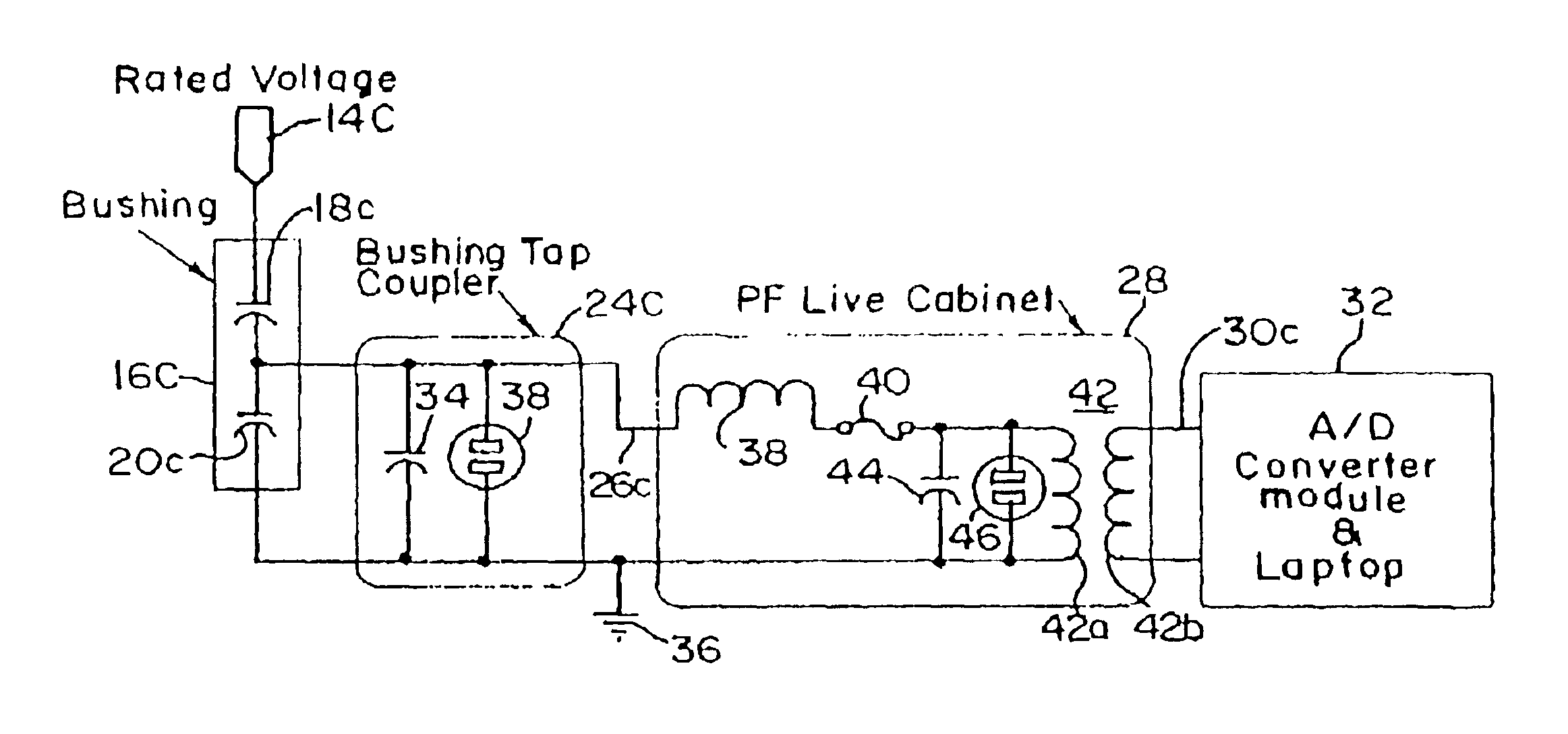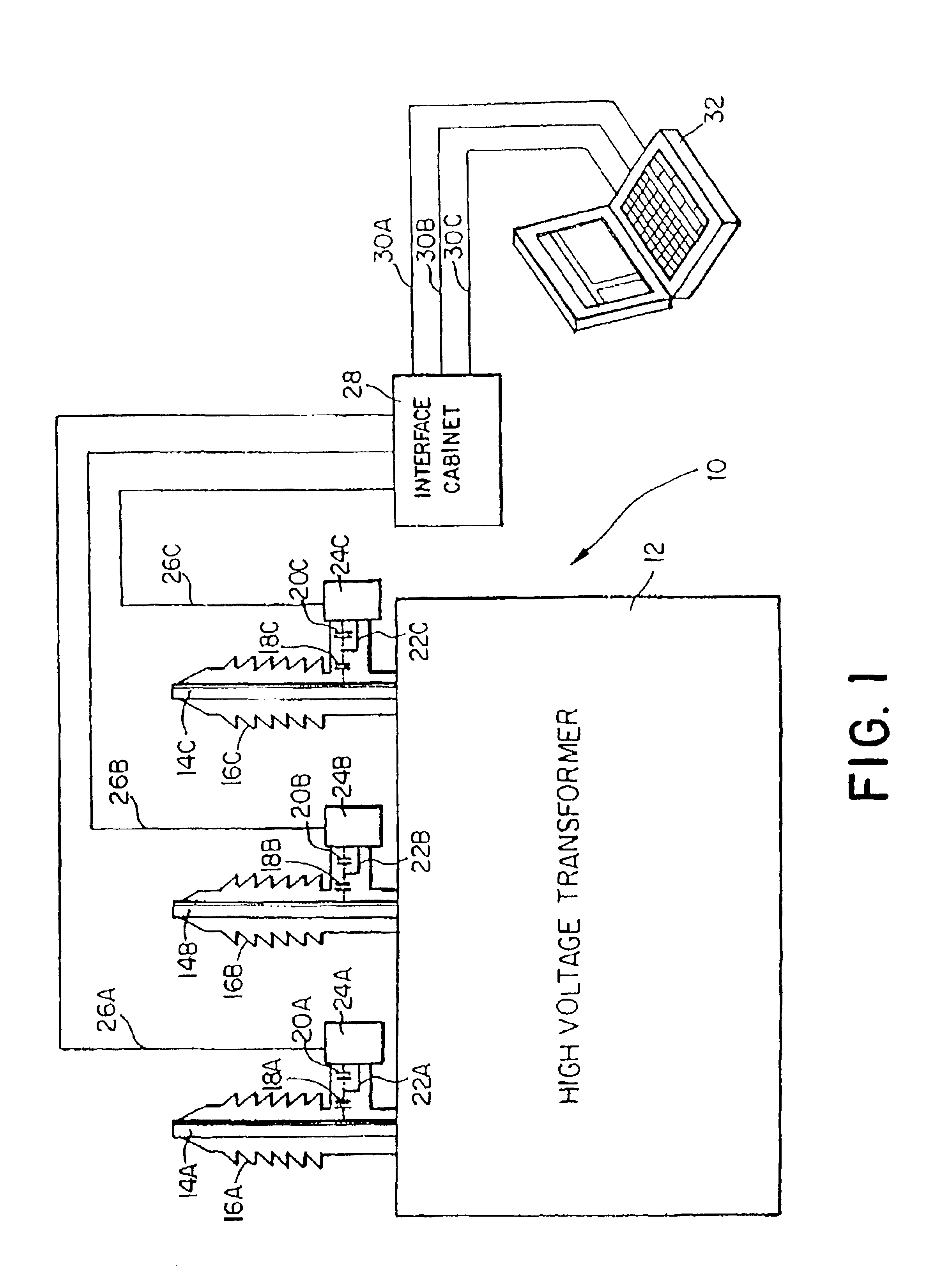Power factor/tan deltatesting of high voltage bushings on power transformers, current transformers, and circuit breakers
a technology of power factor and delta, which is applied in the direction of dielectric property measurement, instruments, base element modifications, etc., can solve the problems of long shut-down time, expensive equipment disconnections, and loss of service equipment for whatever period of tim
- Summary
- Abstract
- Description
- Claims
- Application Information
AI Technical Summary
Benefits of technology
Problems solved by technology
Method used
Image
Examples
Embodiment Construction
[0017]FIG. 1 shows very schematically a HV transformer generally designated 10. The transformer itself is enclosed in a casing 12 which is preferably metal or other conductive material that can be grounded. The HV transformer windings and core are contained within the casing insulated from the casing by appropriate supports and by oil which may be mineral oil or processed oil improving its insulating properties. The voltage is sufficiently high that considerable attention must be given to bringing its HV conductors out of the transformer casing 12. The transformer represented here has three HV outlets shown which may represent three phases of alternating the current which are commonly kept together and are common in the transformer housing. There is a HV rod connector 14A, 14B, and 14C for the respective phases. Each of these HV conductors is spaced away from the transformer casing 12 by providing an opening sufficiently larger than the respective rod conductors 14A, 14B, and 14C to...
PUM
 Login to View More
Login to View More Abstract
Description
Claims
Application Information
 Login to View More
Login to View More - R&D
- Intellectual Property
- Life Sciences
- Materials
- Tech Scout
- Unparalleled Data Quality
- Higher Quality Content
- 60% Fewer Hallucinations
Browse by: Latest US Patents, China's latest patents, Technical Efficacy Thesaurus, Application Domain, Technology Topic, Popular Technical Reports.
© 2025 PatSnap. All rights reserved.Legal|Privacy policy|Modern Slavery Act Transparency Statement|Sitemap|About US| Contact US: help@patsnap.com



